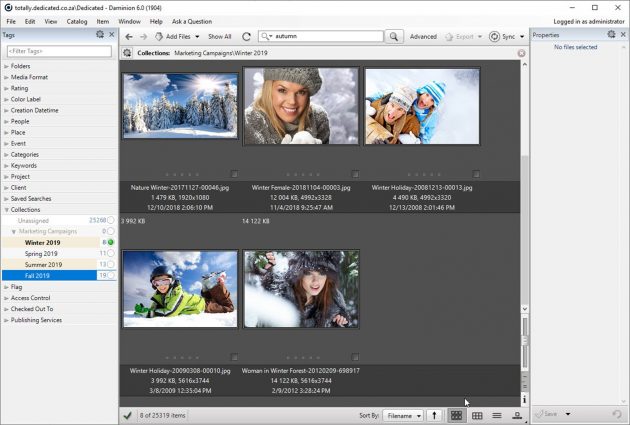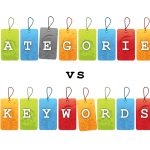We use different types of collections in our DAMS every day.
A Saved Search is dynamic. The content of that search changes as the metadata in the files change. It can contain images of untagged people, products older than five years, event photos that have no geolocation information assigned, amongst others.
A collection, on the other hand, is an unchanging, static set of files. For example, images for this season’s marketing campaign will not change, and everybody uses it over and over, pictures from this year’s marketing expo or product range XYZ.
Saved Searches
Use them when you want to refer back to a search later or monitor specific sets of assets against metadata.
You can save any search to reuse. Click the gear icon next to the search parameters, select “Save Search” and enter a descriptive name.

I use saved searches in my workflow when I need to ensure compliance with our in-house tagging minimum requirements. It is easy to locate assets that are not in tagged according to specification, assign those assets to team members for tagging and in doing so comply with our guidelines.
When you are working in a team environment without regular communication between different departments, shifts and locations, your assets will sit in that “no metadata assigned black hole.” An undiscoverable digital asset is useless to you as a business asset. Saving searches comes to the rescue! Because they are dynamic, when new, untagged assets enter the workflow, they are automatically picked up.
Because tagging requires subjective interpretation, it is often difficult to assess the productivity of a team. At the end of each day, I monitor and record progress by noting the totals on searches assigned to team members, identifying areas where productivity hit a bottleneck or workflow needs optimization.
Example workflow: tagging people.
In the video above I go through the process of using a saved search to ensure that all the assets in the category “People or Portraits,” are tagged with gender.
- Build your taxonomy.
- Save a search that excludes tags listed in that taxonomy.
- Systematically go through the assets assigning tags, periodically refreshing the search to exclude recently tagged items.
- Repeat until search results are zero.
Collections
When should I create a collection? I often find myself doing repetitive searching, looking for the same set of images again and again. There also are times when other departments in our company reuse sets of pictures.
Digital assets used for marketing, branding and communications are excellent examples of collections. The users in your organization will reuse them frequently.
Your brand will inevitably go through design iterations – your documentation layouts are updated, or you redesign your logos. When we use company-wide image collections, we ensure that everybody uses the same approved brand identity.
Your marketing department will reuse a set of approved assets for each marketing campaign. When you save these in an easy to find Collection, the correct assets are always available to your team.
[cta-block]







